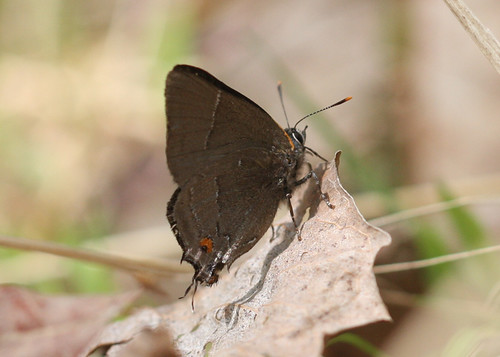In the woods this morning, I heard several Yellow-rumped, Pine, and Black-and-white Warblers. Once the sun warmed up the air, a few Blue-headed Vireos started singing. Although the focus of the migration is often on these colorful birds, many other birds have been moving. Quite frequently, I have seen Double-crested Cormorants, a bird usually associated with water, fly over the house. Also, twice in the past week, I have seen Wood Ducks fly over the yard.
With the temperatures in the upper sixties, more butterflies have emerged than the early-spring fliers, which include the Spring Azure and the Mourning Cloak. Two weeks ago, a walk through the woods would produce 4 species at the most, but now, I can find eight or more in a small area. Swallowtails have emerged during this past week, and are common throughout the woods. Eastern Tiger Swallowtails are fairly common, but the Spicebush Swallowtails seem to be ubiquitous this spring. Spreadwing Skippers, specifically Juvenal's and Sleepy Duskywings have also been flying. Here in Kunkletown, these two species seem to enjoy nectaring on the lowbush blueberry (Vaccinium pallidum) which is blooming on the ridge top.
The most exciting butterfly was one that I almost ignored. I saw a small butterfly fluttering along the ground, and assumed it was another Spring Azure. It landed in front of me, and took off when I got too close. When it flew, I noticed that the top of the wings were not the pale blue of an azure, but rather a deep, iridescent blue. When I bend down to get a better view, I realized that the little lepidoptera was a White M Hairstreak. This small butterfly is brown underneath, with a white "m" on the hindwing. There is also a small blue and an orange spot. The top is a dazzling blue color.

As a final note, a few "summer-like" animals have joined the yard. Just recently, the Gray Treefrogs started singing as well as the Pickerel Frogs and the Spring Field Crickets.

No comments:
Post a Comment